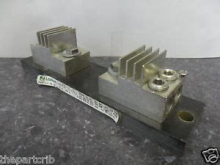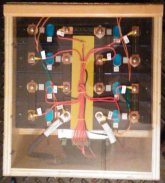Solarfun4jim
Solar seduced :-)
I've noted a rule of thumb for Copper busbar current carrying capacity of 1.2*busbar width*busbar thickness in Amps.
(What is Busbar Current Carrying Capacity Calculation 5 Types of Busbar | Electrical4u)
The supplied Xuba busbars with my 280Ah cells were 15mm x 2mm, so applying formula means that these busbar might be rated close to 1.2*15*2 = 36A
Does tinning them make that much difference? These seem rather low, even if doubled up.
Anyone tested the Xuba busbars to see what they max out at (safe temp)
(What is Busbar Current Carrying Capacity Calculation 5 Types of Busbar | Electrical4u)
The supplied Xuba busbars with my 280Ah cells were 15mm x 2mm, so applying formula means that these busbar might be rated close to 1.2*15*2 = 36A
Does tinning them make that much difference? These seem rather low, even if doubled up.
Anyone tested the Xuba busbars to see what they max out at (safe temp)







